Pyrrophyta or fire algae is a division of unicellular algae that has a yellow brown color, and has two different flagella which are ribbon-shaped. It contains some pigments (chlorophyll-a, chlorophyll-b, c1, c2 and fucoxanthin) that can photosynthesize.
Early botanists classified dinoflagellates as a separate division of algae, which they named Pyrrophyta, after the Greek word ‘pyrr(h)os’ meaning fire. Later it was found that Pyrrophyta division includes many members which for the convenience of study were divided into dinoflagellates and cryptomonads.
- Dinoflagellates: Have cell walls.
- Cryptomonads: Do not have cell walls, contain proteinaceous plates.
There had been a controversy regarding the true nature of Pyrrophyta. Because they can move with the flagella and some members can’t produce their own foods, zoologists like to consider them as protozoans.
Best safe and secure cloud storage with password protection
Get Envato Elements, Prime Video, Hotstar and Netflix For Free
Best Money Earning Website 100$ Day
#1 Top ranking article submission website
One of the fascinating characteristics of Dinoflagellate is that it can produce and emit light. As a result, the habitat containing them may show light emitting character during night hours.
The Noctiluca scintillans (‘sea sparkle’) is an example of such dinoflagellate that exhibits bioluminescence. The name of this algae has been recorded to mean “sea ghost” or “fire of the sea”.
Dinoflagellate are cause to Bioluminescence
At night, water can have an appearance of sparkling light due to the bioluminescence of dinoflagellates. More than 18 genera of dinoflagellates are bioluminescent, and the majority of them emit a blue-green light.
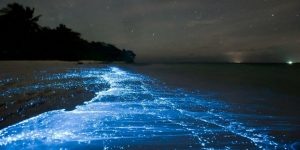
They contain luciferase, the main enzyme involved in dinoflagellate bioluminescence, and luciferin, a chlorophyll-derived tetrapyrrole ring that acts as the substrate to the light-producing reaction. The luminescence occurs as a brief (0.1 sec) blue flash (max 476 nm) when stimulated, usually by mechanical disturbance. Therefore, when mechanically stimulated by boat, swimming or waves, luciferin produces light with the help of luciferase enzyme.
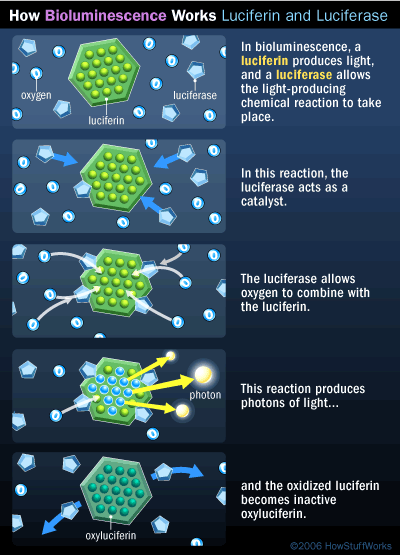
The luciferin-luciferase reaction is pH sensitive. When the pH drops, luciferase changes its shape, allowing luciferin, more specially tetrapyrrole, to bind.
Dinoflagellates can use bioluminescence as a defense mechanism. They can startle their predators by their flashing light or they can ward off potential predators by an indirect effect such as the bungler-alarm. The dinoflagellate can use its bioluminescence to attract attention to itself, thereby bringing attention to the predator and making the predator more vulnerable to predators from higher trophic levels.
Dinoflagellates as Harmful Blooms
Dinoflagellates sometimes bloom in concentrations of more than a million cells per milliliter. Some species produce neurotoxins, which in such quantities kill fish and accumulate in filter feeders such as shellfish which in turn may pass them on to people who eat them.
This phenomenon is actually red tide that originates from the color the bloom imparts to the water. Some colorless dinoflagellates are may also form toxic blooms, such as Pfiesteria.
Some dinoflagellate blooms are not dangerous. Bluish flickers visible in ocean water at night often come from blooms of bioluminescent dinoflagellates, which emit short flashes of light when disturbed. Red tide mentioned is more specifically produced when dinoflagellates are able to reproduce rapidly and copiously on account of the abundant nutrients in the water (eutrophication).
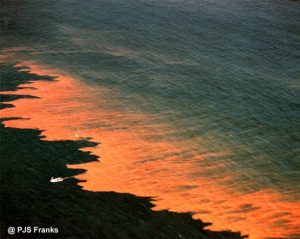
Although the resulting red waves are an unusual sight, they contain toxins that not only affect all marine life in the ocean, but the people who consume them, as well. A specific carrier is shellfish. They can introduce both non-fatal and fatal illnesses. One such poison is saxitoxin, a powerful paralytic. Human imputs of phosphate further encourage these red tides, so there is a strong interest in learning more about dinoflagellates, from both medical and economic perspectives.
References
- http://domainbiology.blogspot.com/2017/10/pyrrophyta-or-fire-algae-dino-flagellata.html
Revised by
- Abulais Shomrat on 25 July, 2020.
Written by
Partho Sarathee Dey, B.S. (Hons), Department of Botany, University of Dhaka
 Plantlet The Blogging Platform of Department of Botany, University of Dhaka
Plantlet The Blogging Platform of Department of Botany, University of Dhaka
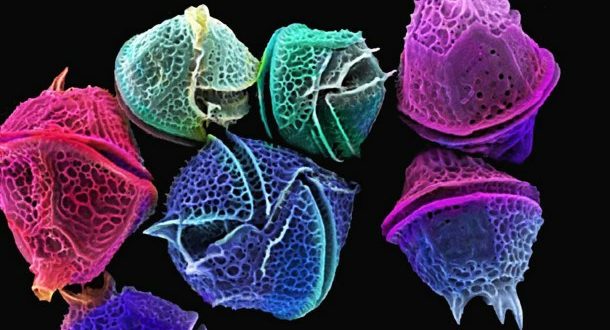

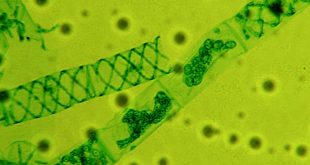
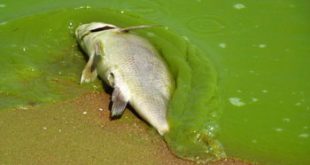
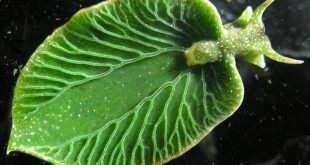
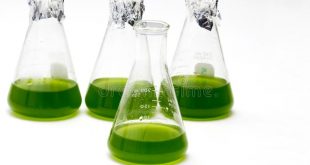
Informative one❤.
Point-wise organisement may give a better look.
This article is ranked on the first page of google for keyword ‘pyrrophyta’. ❤️
How exiting is biology
I love the fire algae